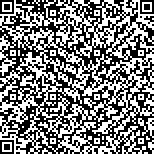|
|
|
| |
|
|
| 本文已被:浏览 2873次 下载 1787次 |

码上扫一扫! |
|
|
| 基于16S rDNA基因序列探讨引进物种紫扇贝(Argopecten purpuratus)在海湾扇贝属(Argopecten)中的分类地位 |
|
胡丽萍1,2, 姜黎明3, 黄晓婷1, 包振民1
|
|
1.中国海洋大学海洋生物遗传学与育种教育部重点实验室 青岛 266003;2.烟台市水产研究所 烟台 264003;3.山东东方海洋科技股份有限公司 烟台 264000
|
|
| 摘要: |
| 秘鲁紫扇贝(Argopecten purpuratus)于2008年被引进我国,与海湾扇贝(Argopecten irradians irradians)成功杂交。为探讨紫扇贝在海湾扇贝属中的分类地位及与相似种海湾扇贝的进化关系,随机选取紫扇贝和海湾扇贝各10个个体,利用通用引物进行16S rDNA基因片段扩增并双向测序。序列分析结果表明,紫扇贝和海湾扇贝扩增获得基因片段长度均为542bp,碱基组成A+T所占比例分别为紫扇贝54.2%和海湾扇贝55.1%。紫扇贝和海湾扇贝种内分别有6和10个变异位点,种间有41个变异位点,且种内和种间变异均为转换或者颠换,无插入/缺失类型。结合GenBank同源序列信息,对海湾扇贝属物种进行遗传距离分析及分子系统树的构建。结果表明:海湾扇贝属7种扇贝[紫扇贝(A.purpuratus)、A.irradians、墨西哥湾扇贝(A.i.concentricus)、A.i.irradians、A.nucleus、A.gibbus和A.ventricosus]在系统树上聚为2支,与紫扇贝亲缘关系最近的是A.ventricosus,且该两种扇贝单独聚为一支。其余5种扇贝中,A.irradians、A.i.concentricus和A.i.irradians最先聚为一支,支持A.i.concentricus和A.i.irradians为A.irradians两个亚种的结论;另外,A.nucleus与以上三者也有很近的亲缘关系。该研究结果为海湾扇贝属物种进化、迁移及其遗传育种研究提供了理论基础。 |
| 关键词: 紫扇贝 海湾扇贝属 16S rDNA 系统发生 杂交育种 |
| DOI:10.11693/hyhz20160600120 |
| 分类号: |
| 基金项目:现代农业产业技术体系建设项目,CARS-48号;山东省农业良种工程重大课题;山东省现代农业产业技术体系贝类产业创新团队建设项目,SDAIT-14-11号。 |
|
| PHYLOGENETIC POSITION OF ARGOPECTEN PURPURATUS IN GENUS ARGOPECTEN INFERRED BY MITOCHONDRIAL 16S rDNA GENE SEQUENCES |
|
HU Li-Ping1,2, JIANG Li-Ming3, HUANG Xiao-Ting1, BAO Zhen-Min1
|
|
1.Key Laboratory of Marine Genetics and Breeding(MGB), Ministry of Education, Ocean University of China, Qingdao 266003, China;2.Yantai Fisheries Research Institute, Yantai 264003, China;3.Shandong Oriental Ocean SCI-TECH CO., LTD, Yantai 264000, China
|
| Abstract: |
| Peruvian scallop Argopecten purpuratus was introduced to China in 2008 and was successfully hybridized with A.irradians irradians.The hybrid offspring exhibited extraordinary heterosis in growth in addition to some new features.To understand the phylogenetic position of A.purpuratus in genus Argopecten,as well as genetic relationship between A.purpuratus and A.i.irradians,10 individuals were randomly sampled from A.purpuratus and A.i.irradians,and the partial sequences of 16S rDNA genes were amplified by universal primers and sequenced.Genetic information indexes,including nucleotide composition,sequence variation,inter-and intra-specific genetic distance were determined using a suite of biology software.With our native species Chlamys farreri as designated outgroup and available sequences from homologous regions of other Argopecten species registered in GenBank,phylogenetic trees were constructed based on the neighbor-joining (NJ) and maximum-likelihood (ML) methods.In total,542bp nucleotide sequences of A.purpuratus and A.i.irradians were obtained,and the content of A+T was 54.2% and 55.1% in A.purpuratus and A.i.irradians,respectively.Sequences alignment analysis showed that there were 6 and 10 intraspecific variable nucleotide positions in A.purpuratus and A.i.irradians,respectively,as well as 41 interspecific variable nucleotide positions between the two species.All the intraspecific and interspecific variable positions were transitional and transversional,while no indels were detected.The genetic distance and phylogenic trees demonstrate that A.purpuratus,A.irradians,A.i.concentricus,A.i.irradians,A.nucleus,A.gibbus,and A.ventricosus form into two clades,of which,A.purpuratus is genetically close to A.ventricosus,and they cluster as one clade.Among the other 5 species of genus Argopecten,A.gibbus is the most primitive.The genetic relationship among A.irradians,A.i.concentricus,and A.i.irradians are close,suggesting that A.i.concentricus and A.i.irradians are subspecies of A.irradians.Meanwhile,A.nucleus appears closely to these three species of A.irradians,A.i.concentricus,and A.i.irradians.This work provides basic information for future comparative study on species evolution,immigration,and breeding strategies of Argopecten. |
| Key words: Argopecten purpuratus genus Argopecten 16S rDNA phylogeny hybridization breeding |
|
|
|
|
|
|
